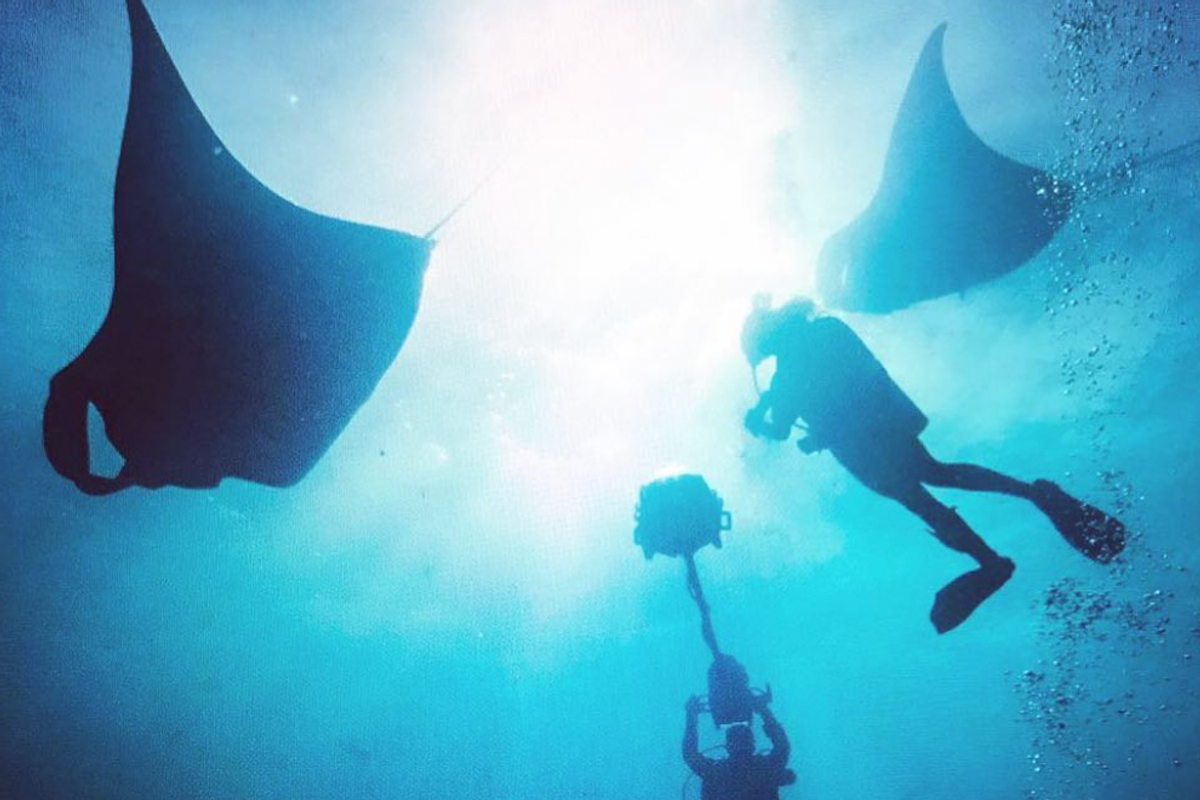Marine biologist offers virtual deep dives—bringing us to the ocean with advanced technology
Going above and beyond to bring us deep below.

You could say Marine biologist, divemaster and National Geographic Explorer Dr. Erika Woolsey is a bit of a coral reef whisperer, one who brings her passion for ocean science to folks on dry land in a fresh, innovative and fun new way using virtual reality.
Images courtesy of Meta’s Community Voices film series
Her non-profit, The Hydrous, combines science, design, and technology to provide one-of-a-kind experiential education about marine life. In 2018, Hydrous produced “Immerse 360”, a virtual underwater journey through the coral reefs of Palau, with Dr. Woolsey as a guide.
Viewers got to swim with sharks, manta rays and sea turtles while exploring gorgeous aquatic landscapes and learning about the crucial role our oceans play—all from 360° and 3D footage captured by VRTUL 2 underwater storytelling VR cameras.
Hydrous then expanded on the idea to develop two more exciting augmented adventures using Meta Quest 2 technology: “Expedition Palau,” a live event where audiences can share a “synchronized immersive reality experience”, which includes live narration from Woolsey, and “Explore,” a “CGI experience” to enjoy the magic of the ocean at home.
“I’ve been extremely fortunate to explore and study coral reefs around the world,” Woolsey said, sharing that it was “heartbreaking” to see these important habitats decay so rapidly while the latest scientific reports did not clearly lead to widespread compassionate action.
“How do we care about something we never see or experience?” she reflected. As she discovered, virtual reality would be a powerful solution for eliciting empathy. “VR has the ability to generate presence and agency and make you feel like you’re there. It's that emotional connection that can bridge scientific discovery and public understanding”
The combination of virtual reality and the ocean’s natural breathtaking beauty is, as Woolsey puts it, a “match made in heaven” for getting people more engaged in ocean education. “When you’re floating you can look up and down and all around you…seeing a school of fish surrounding you and reefs in these cathedral-like structures. Rather than watching a video of a scientist, you get to become the scientist.”
Hydrous also has special kits to provide middle school students hands-on learning about ocean life. In addition to a journal, activity cards and a smartphone VR viewer, each kit includes lifelike 3D printed model pieces of a coral reef so that middle school students can try building their own.
These reef models even turn white when temperatures rise inside the aquarium, which mimics the real “bleaching” that corals endure when they die due to higher than normal ocean temperatures. Students really do become scientists as they figure out how to bring color back to their reef.
While it’s true that the health of our oceans affects us all, the growing threats our oceans face—pollution, overfishing, climate change—don’t always affect us on an empathetic level. Through the use of technology, Woolsey has created an innovative way to connect hearts and minds to one of the Earth’s most important resources, which can inspire real and lasting change.
“We can’t bring everybody to the ocean, but we’re finding scalable ways to bring the ocean to everyone.”
To learn more about Hydrous, click here.
- Virtual Disney tripping is even wilder with these 360°style theme ... ›
- Watch these 90-year-old globe-trotters travel the world through ... ›
- Conjoined twins separated with the help of virtual reality - Upworthy ›
- Watch a horseshoe crab rescue its flipped-over friend - Upworthy ›
- Astronaut explains the overview effect - Upworthy ›
- Scientists left cinderblocks in a barren part of the sea. 3 months later they were ecstatic. - Upworthy ›







 A woman takes a dark shower.
A woman takes a dark shower.